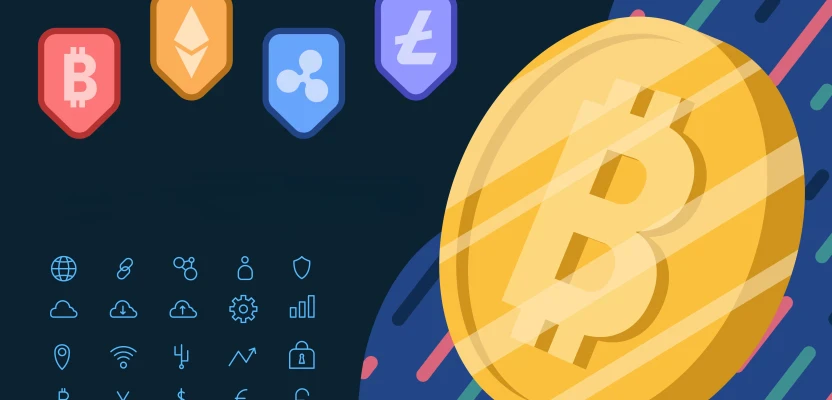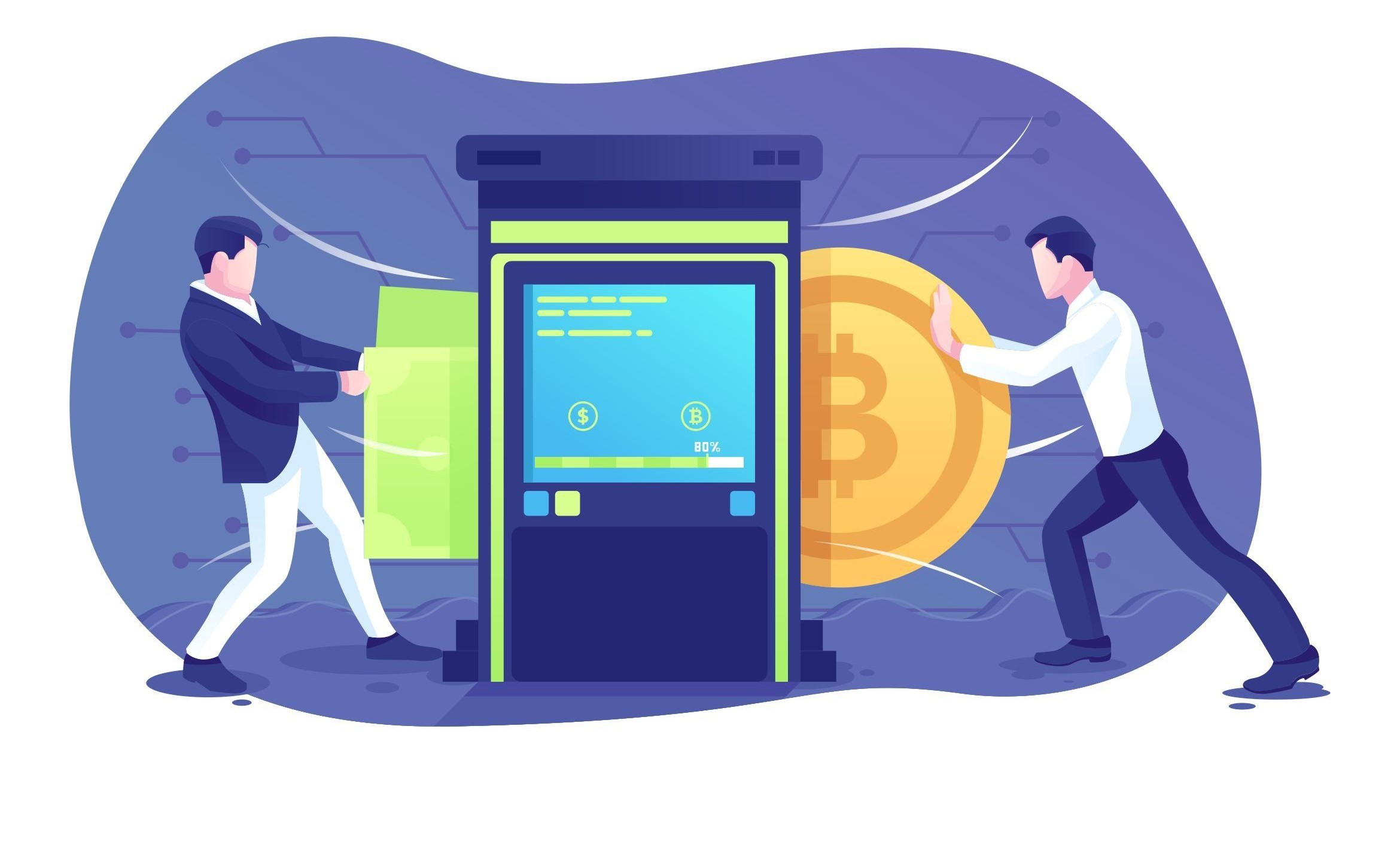
In the vast expanse of the digital age, cryptocurrencies have emerged as both a novel investment opportunity and a technological innovation, reshaping how we understand value transfer in the 21st century. This guide offers a comprehensive overview of the process for purchasing cryptocurrency.
What is cryptocurrency?

Before embarking on a cryptocurrency acquisition, it's crucial to understand what it is. Cryptocurrency's genesis can be traced back to the creation of Bitcoin in 2009 by an individual or group known as Satoshi Nakamoto. Cryptocurrency is digital or virtual money that takes the form of tokens or "coins". Unlike traditional currencies, it exists outside the purview of central banks and government control. Its foundation is the blockchain—a decentralized ledger of all transactions across a network. This technology ensures security and anonymity, making it difficult to counterfeit or manipulate.
When a transaction is made, it is recorded in a "block" and added to a "chain" of historical transactions. This chain is public, allowing for transparency and veracity in transactions. The decentralized nature of blockchain means that no single entity has control, a concept that challenges traditional centralized financial systems.
Step 1. Select a cryptocurrency exchange
Venturing into the world of cryptocurrency begins with a fundamental step: selecting the right exchange platform. There are three primary types of exchanges each offering distinct advantages tailored to different levels of expertise and strategies.
Centralized exchanges. Centralized exchanges serve as intermediaries in the world of cryptocurrency, offering a layer of oversight and security that appeals particularly to newcomers. These platforms facilitate transactions by providing a secure environment where users can buy and sell digital assets at market rates. The operational model of centralized exchanges, such as Coinbase, Gemini, and Kraken, involves generating revenue through service-related fees. While their user-friendly interface and robust security measures are attractive, their centralization makes them potential targets for cyber threats, a factor worth considering in your selection process.
All-in-one exchanges. Investors accustomed to the conventional brokerage framework might find all-in-one exchanges appealing. These platforms, like Robinhood, Webull, and TradeStation, seamlessly integrate the trading of cryptocurrencies with traditional financial assets. This hybrid model allows users to diversify their portfolio across both digital and traditional realms, offering a comprehensive financial platform.
Decentralized exchanges. Decentralized exchanges represent the frontier of crypto trading, eliminating the intermediary to allow for direct peer-to-peer transactions. This model not only potentially lowers transaction fees but also disperses the risk of cyberattacks due to its decentralized nature. However, the complexity and technical demands of using such platforms make them more suited to advanced people. These exchanges offer competitive prices and a degree of security but require a deeper understanding of blockchain technology and crypto trading practices.
When selecting an exchange, several factors come into play, from security to the range of available assets.
- Security. The paramount concern in the digital realm is security. An exchange's commitment to security measures, such as two-factor authentication (2FA), encryption, and cold storage of assets, speaks volumes about its reliability and respect for user assets.
- Regulatory compliance. A platform that adheres to regulatory standards and possesses the necessary licenses demonstrates a commitment to operational integrity and user protection.
- User interface. The complexity of digital finance demands simplicity in interaction. A user-friendly interface that balances sophistication with accessibility empowers users to navigate the digital currency space with confidence.
- Asset variety. Whether you're diversifying your portfolio or focusing on specific digital assets, the variety of cryptocurrencies offered is a crucial factor. An exchange that provides a wide range of options reflects a dynamic understanding of the digital market.
- Fees. Transparent and reasonable fee structures are indicators of an exchange's fairness and customer-centric approach. Understanding the fee breakdown for trades, withdrawals, and other transactions is essential for making informed decisions.
- Customer support. In the digital age, human connection remains invaluable. Responsive customer support that addresses concerns and queries with empathy and efficiency can significantly enhance the user experience.
Step 2. Create your account
Once you've chosen an exchange, creating your account is the next step. This process typically involves providing your email address and creating a password. It's essential to use a strong, unique password that combines letters, numbers, and special characters to reduce the risk of unauthorized access. Some exchanges might also require additional information to comply with Know Your Customer (KYC) regulations, which could include a government-issued ID or a utility bill for address verification.
After setting up your account, enhancing its security with two-factor authentication (2FA) is crucial. 2FA adds an extra layer of protection by requiring a second form of verification beyond your password, such as a code sent to your mobile device or generated through an app. This step significantly reduces the risk of account breaches, ensuring that only you have access to your investments.
Step 3. Deposit funds
To buy cryptocurrency, you'll need to deposit funds into your exchange account. This can usually be done via bank transfer, credit card, or other cryptocurrencies. Be aware of deposit fees and the time it may take for your funds to appear in your account, as these can vary depending on the method used and the exchange itself.
Step 4. Choose a cryptocurrency
Selecting the cryptocurrency hinges on multiple factors, reflecting your personal goals, risk tolerance, and interest in the technology or community behind the cryptocurrency. At the forefront of this digital finance realm stand the top 10 cryptocurrencies by market capitalization, each symbolizing a unique facet of the crypto world's potential and challenges.
- Bitcoin (BTC) stands as the pioneering cryptocurrency, establishing the foundational blockchain technology and serving as a digital gold standard in the crypto market. Its widespread acceptance and limited supply underscore its dominant position as a store of value.
- Ethereum (ETH), as the leading smart contract platform, facilitates the development of decentralized applications (dApps), playing a crucial role in the expansion of the crypto ecosystem beyond mere transactions to a wide array of digital services and applications.
- Tether (USDT) and USDC (US Dollar Coin), as stablecoins pegged to the US dollar, offer the crypto market stability and liquidity, providing a safe harbor against the often turbulent seas of crypto volatility and serving as essential tools for traders and investors alike.
- BNB (Binance Coin), initially launched to support the operations of the Binance exchange, has grown into a utility token with a myriad of uses within the Binance ecosystem, demonstrating the potential for exchange-based tokens to achieve significant utility and value.
- Solana (SOL) introduces a high-performance blockchain capable of supporting scalable applications, heralding a new wave of fast and efficient platforms for the crypto future.
- XRP aims to revolutionize international transactions with its fast and energy-efficient network, offering a glimpse into the potential for cryptocurrencies to enhance or replace traditional financial systems.
- Dogecoin (DOGE), born from an internet meme, illustrates the powerful combination of community support and digital culture in driving the value and adoption of cryptocurrency.
- Cardano (ADA) emphasizes a scientific approach to blockchain development, focusing on security, scalability, and sustainability, representing the ongoing evolution and maturation of blockchain technology.
- Avalanche (AVAX) rounds out the list with its focus on creating a highly decentralized and scalable blockchain platform, highlighting the continuous innovation within the crypto space aimed at solving the trilemma of scalability, security, and decentralization.
Step 5. Buy and store cryptocurrency
With funds in your account, you can purchase cryptocurrencies. Most exchanges offer a simple interface to buy at the current market price, while advanced options allow for more complex trading strategies.
Once purchased, the security of your cryptocurrencies is entirely in your hands. Cryptocurrency wallets provide a digital solution to store and manage your blockchain assets and keys.
- Hot wallets offer the convenience of quick access through internet-connected devices like smartphones and computers but come with heightened risks of cyber theft due to their online nature. Despite this, they serve well for those who engage in frequent transactions, thanks to their operational ease and, in some cases, custodial support for account recovery.
- Cold wallets, on the other hand, stand as the fortresses of cryptocurrency storage. Operating offline, these devices, such as USB drives or hard drives, virtually eliminate the risk of online hacking, providing peace of mind for the security-conscious. However, they carry their own set of risks, including loss or failure of the device, which could lead to permanent loss of assets—a stark reminder of the need for careful physical management.
Choosing between staying with an exchange, moving to a hot wallet, or securing assets in a cold wallet boils down to a personal choice, influenced by how actively you trade and your security preferences.
Conclusion
Buying cryptocurrency is a journey that requires careful planning, research, and a clear understanding of the risks involved. By following these steps, you can make informed decisions and participate in the burgeoning world of digital currency.




Comments 0